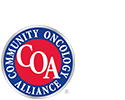New Real World Health Care Series: Melanoma Research and Treatment
“Have you heard from mom and dad recently?” My sister’s question caught me off-guard. Without realizing it, I hadn’t actually heard from my parents in a while. She had already asked my brother the same question and he reported not hearing from them lately either. With no imminent trips back to Michigan from our respective homes in Colorado, Maryland, and North Carolina, all three of us started calling and emailing our parents with some urgency to make sure things were well.

Krista Zodet, President, HealthWell Foundation
My mom’s email came back quickly, bringing us up to speed: “Dad went to the dermatologist about a troublesome spot on his cheek and the doctor did a full body check too. He found a spot on the back of his thigh and did a biopsy. Diagnosis: melanoma. Treatment: surgery.” They removed a patch of skin from my dad’s leg – an area he couldn’t see and for the most part was covered by shorts or pants year-round. It had been malignant and they got all of it.
That was early 2001, and my dad had just retired (talk about timing). Because of early detection and annual check-ups since, he has been melanoma-free for 16 years. We learned a lot about melanoma back then: It is the most dangerous form of skin cancer; and we also understand – thankfully – if it is recognized and treated early, it is almost always curable.
May is Melanoma Awareness Month
Since HealthWell opened its melanoma fund, I have learned even more about this devastating disease: Without early detection, the cancer can advance and spread to other parts of the body, where it becomes hard to treat and can be fatal. According to the Skin Cancer Foundation, melanoma kills an estimated 10,130 people in the U.S. annually.
Treatment typically begins by surgically removing the melanoma. Surgical treatments have advanced over the past decade, and most can be done in the doctor’s office or as an outpatient procedure under local anesthesia. In recent years, Mohs Micrographic Surgery has become popular as an alternative to standard surgery for certain melanomas. This procedure spares as much of the normal tissue (known as the margins) as possible while allowing the surgeon to pinpoint the cancer’s location when it is invisible to the naked eye.
When melanoma cells spread to the lymph nodes (stage III) or more distant parts of the body (stage IV), the disease is considered advanced and additional therapy usually follows surgical removal of the original skin tumor. Thanks to an array of treatment options, patients with metastatic melanoma can extend their lives by months or years. A rising number of patients go into long-term remission.
The HealthWell Foundation, sponsor of Real World Health Care, is proud to have supported the melanoma patient community in recent years with copayment and premium assistance. We have helped more than 2,230 melanoma patients afford their treatments since approving our first Melanoma grant in 2011 — thanks to the generous support of our corporate partners. Due to high patient volume, our melanoma fund is temporarily closed until we receive additional funding. We invite corporations and individuals to help us meet this demand by contributing to our Melanoma-Medicare Access Fund, so nobody goes without essential medications because they cannot afford them.

















